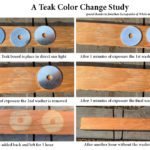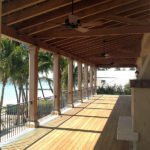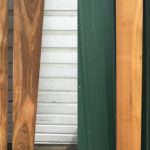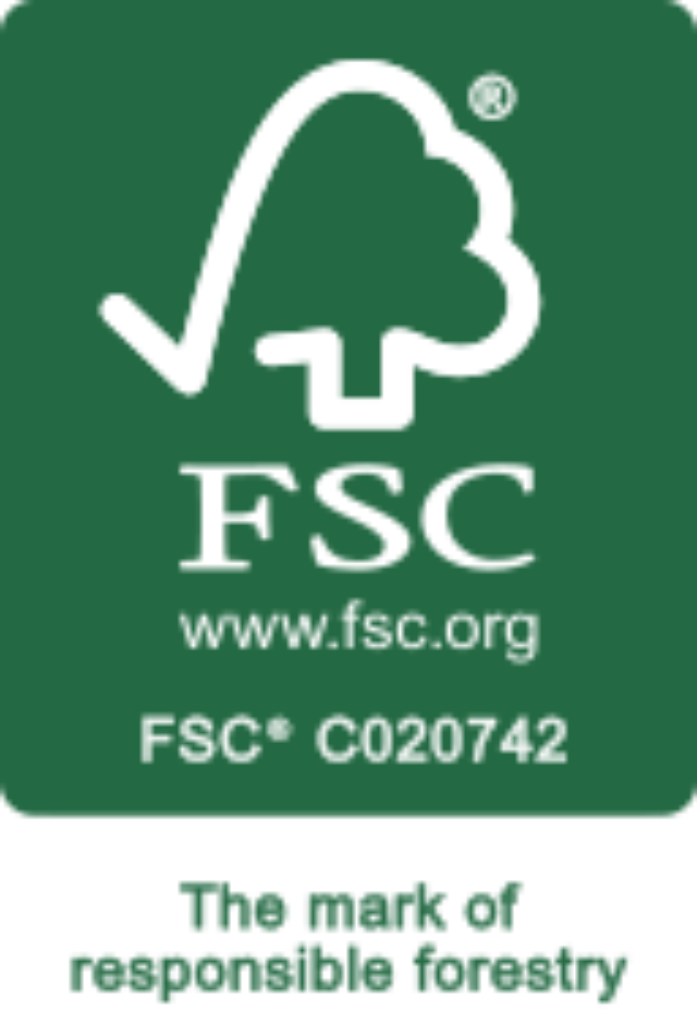
The choice between “genuine” Teak and plantation Teak is a comparison battle that will continued to be waged for some time. J. Gibson McIlvain has been supplying only authentic Burmese Teak for years to boat builders nationwide. Genuine Teak is known for it’s superior golden color and vertical grain that is so highly sought after by yacht builders and the marine industry. But Teak isn’t just for boats anymore and the look continues to gain in popularity in home building and interiors everywhere. We are starting to see a market for plantation quality Teak now.
Cons of Plantation Teak
We have visited many plantations and have not been happy with the quality of the Teak and the inconsistent coloring. The honey brown color so iconic in the Midcentury design movement just isn’t there in plantation Teak. The soil chemistry and higher growth rate common in a plantation produce a much wider color and grain inconsistency. The fast growth rate and sparse forest canopy creates a much greater percentage of lower branches. While these are pruned regularly the pin knots that result interrupt the grain flow and create a trap for water thereby reducing the weather resistance that Teak wood is known for worldwide. Finally, the harvest rate means that most plantation Teak will yield shorter and narrower boards overall.
But here is the most important difference. The location of these plantations create a problem too. While technically the trees grown are still genuine Teak, Tectona grandis, the soil chemistry is dramatically different with lower silica percentages. It is the high silica content that makes Teak wood so water and weather resistant in the first place. The differing soil chemistry and climate variations produces a much less consistent board in color and straightness of the grain. In short, using plantation Teak in marine construction is just not a good idea. But for home building and other non marine projects? Well then all of the above shortfalls don’t really disqualify plantation grown Teak. In fact, they could then be seen as an advantage over using genuine Teak.
Color consistency, straight grain, and clear grain are elements that our marine customers demand so we continue to manage an inventory of authentic Burmese Teak. Sustainability is always an issue and it is the driving factor behind the plantation Teak movement, but J. Gibson McIlvain has spent years and many trips abroad to find the best solution for plantation Teak. Certainly with any species the solution will always be proper management of the existing forests. Whether managing an existing forest or planting one from scratch, the trees can be managed when a quality of lumber is in mind. Plantations will suffer initially but with consistent management over many decades, a quality lumber can be realized. This has been the resounding characteristic of the plantations we have started buying from that produce a much higher quality Teak than the market has come to expect. Only after many years of searching have we started to find consistent supply and quality in plantation Teak. This material does make a great source for the blossoming home building market while also leaving the “genuine” material for the boat builders who have much more rigid requirements.
Needless to say whether we are talking about genuine or plantation Teak, the mills that we buy from only practice sustainable harvestry and silviculture. For that matter, environmental regulations prohibit the reckless practices that most environmentalist abhor, so our customers can be confident that our Teak is not only of the highest quality but it is harvested in the most responsible manner.









Leave a Reply